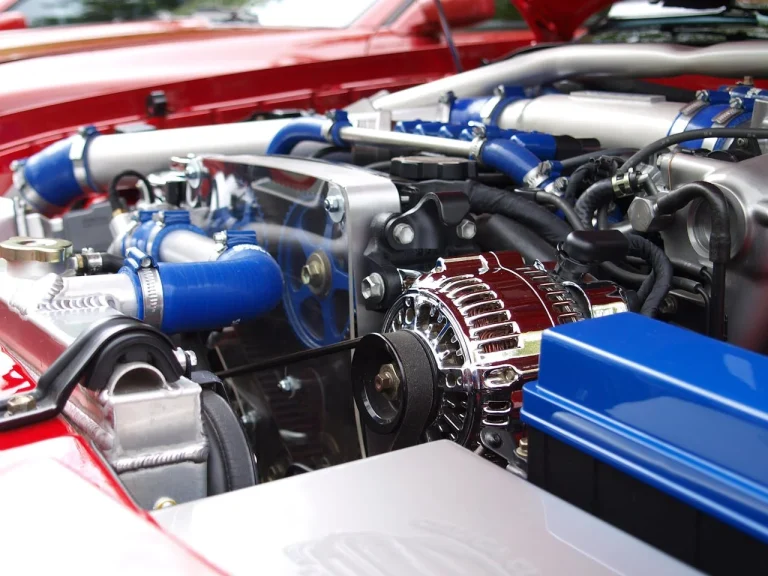From Waste to Resource Modern Filtration for Recycling Black Engine Oil

Black engine oil is usually seen as waste. Once it turns dark and dirty, most people think it must be discarded. In modern automotive and industrial fields, this idea is changing. Used engine oil still contains valuable base oil.
The problem is contamination, not the oil itself. With the help of modern purification equipment—especially vacuum oil purifiers that use controlled heating, vacuum dehydration, and precision filtration—black engine oil can be cleaned, recovered, and used again in suitable applications.
This reduces waste, lowers costs, and supports environmental protection.
Also Read: Buy Reddit Upvotes: Boost Your Posts for Maximum Visibility Right Now
Contents
- 1 Why Engine Oil Turns Black
- 2 The Principle of Vacuum Oil Purification
- 3 Why Vacuum Technology Works Well for Black Engine Oil
- 4 From Waste Oil to Useful Lubricant
- 5 Benefits for Automotive Workshops and Fleets
- 6 Environmental and Regulatory Advantages
- 7 Combining Vacuum Purification With Other Treatment Methods
- 8 Turning a Disposal Problem Into a Resource Strategy
- 9 Choosing a Manufacturer and Getting the Right System
Why Engine Oil Turns Black
Engine oil passes through many harsh conditions inside an engine. High temperature, metal contact, combustion by-products, dust, and moisture all enter the oil over time. Soot from combustion makes the oil appear dark.
Metal particles come from wear on engine parts. Water and fuel residue can enter through blow-by or condensation. Additives in the oil also break down and react with contaminants.
The dark color is a sign of heavy contamination. It does not mean the base oil has lost all value. The key question is whether the contaminants can be removed. If particles, water, gases, and oxidized compounds are reduced, the oil can still serve as a useful lubricant in less demanding systems or be used as a base for other industrial oils.
The Principle of Vacuum Oil Purification
A vacuum oil purifier is designed to remove water, gases, and certain volatile contaminants from oil. It also works with staged filtration to remove solid impurities. The process typically combines heating, vacuum separation, and precision filtration.
First, the used oil is heated to a controlled temperature. Heating reduces viscosity and helps water and light contaminants evaporate more easily. The warm oil then enters a vacuum chamber.
Under low pressure, water and dissolved gases boil at a lower temperature. They are released as vapor and removed from the system. What remains is oil with much lower moisture content and fewer volatile impurities.
Filtration stages remove solid particles such as sludge, carbon residues, and metal debris. This improves clarity and restores the oil’s physical properties.
Why Vacuum Technology Works Well for Black Engine Oil
Black engine oil contains both solid particles and moisture. Traditional paper filters can capture larger particles but cannot remove water or dissolved gases. When moisture remains in the oil, oxidation continues and the oil degrades more quickly.
Vacuum technology solves this problem by targeting water and light contaminants directly. Under vacuum conditions, free water, emulsified water, and dissolved water are removed far more effectively than with standard filtration alone. This is important for used engine oil, which often contains moisture from condensation, coolant leaks, or fuel dilution.
When water content is reduced, the oil becomes more stable. Oxidation slows down. Sludge formation decreases. Combined with precision filtration, the recovered oil becomes more suitable for reuse in secondary applications.
From Waste Oil to Useful Lubricant
Recycled engine oil is usually not returned to high-load automotive engines. Instead, it can support many applications that do not require fresh premium oil. After heating, vacuum dehydration, and precise filtration, the oil can be used in:
- Industrial gearboxes with moderate load
- Lubrication of chains and conveyors
- Diesel generator sets in non-critical service
- Workshop equipment and light-duty hydraulic systems
In some cases, the recovered oil can also be blended with fresh oil or used as base stock for industrial formulations. This reduces the total consumption of new oil.
Benefits for Automotive Workshops and Fleets

Automotive workshops and fleet operators generate significant volumes of used engine oil. Managing this waste is both an environmental responsibility and a cost factor. By using or partnering with vacuum oil purification systems, they can reduce waste oil volume and recover part of its value.
For fleets with many vehicles, extending oil usability through periodic purification reduces the number of full oil replacements. Even when the oil is eventually drained from engines, it can be purified and directed to other uses instead of being treated as pure waste. This lowers disposal costs and reduces the need to purchase as much new industrial oil.
Vacuum purification systems can be stationary units in workshops or mobile equipment that moves between service locations. This flexibility helps operators choose the setup that fits their service demands and oil volume.
Environmental and Regulatory Advantages
Used engine oil is hazardous if it is not handled correctly. It can contaminate soil, groundwater, and surface water. Many regions have strict rules for storage, transport, and disposal. By investing in recycling through vacuum purification, companies reduce the amount of hazardous waste that must be processed.
Recycling supports environmental policy goals. It also improves a company’s public image. Customers and regulators increasingly value businesses that treat waste responsibly instead of burning or dumping it. Purification and reuse fit naturally into modern sustainability strategies.
Combining Vacuum Purification With Other Treatment Methods
Vacuum oil purifiers are often used as part of a multi-stage recovery line. Solid contaminants may be removed first by sedimentation or coarse filtration. Vacuum treatment then targets water and light volatiles. In advanced setups, final polishing filters or adsorption materials may be added to improve color and stability.
For black engine oil, a well-designed treatment process can significantly improve cleanliness and usability. The goal is not to create oil identical to fresh product, but to achieve a stable quality suitable for defined secondary applications. This approach makes recycling practical in automotive and industrial environments.
A well-designed vacuum purification process helps balance cost, performance, and environmental responsibility when dealing with used engine oil.
Learn more about vacuum oil purification systems
Turning a Disposal Problem Into a Resource Strategy
Black engine oil will always exist as long as engines operate. The key question is whether it remains a disposal problem or becomes a recoverable resource. Modern vacuum oil purifiers help move toward the second option. They remove water, gases, and solid contaminants and allow oil to be used again in appropriate systems.
For workshops, fleets, and industrial users, this approach reduces waste, lowers costs, and supports long-term sustainability. Instead of sending all used oil to expensive disposal, companies can recover value from it. Vacuum oil purification technology is a practical tool in this transition from waste to resource.
Choosing a Manufacturer and Getting the Right System
Choosing the right filtration system depends on the manufacturer’s technical experience and the stability of the equipment. A good oil purification system should offer steady heating, reliable vacuum dehydration, and consistent precision filtration. It should also match the user’s oil volume and contamination level.
Working with a vacuum oil purifier manufacturer that focuses on waste oil treatment makes the process easier. They can guide the setup, provide support, and help ensure long-term performance. For workshops and fleets, investing in a suitable system turns used engine oil into a manageable resource rather than a recurring waste cost.





